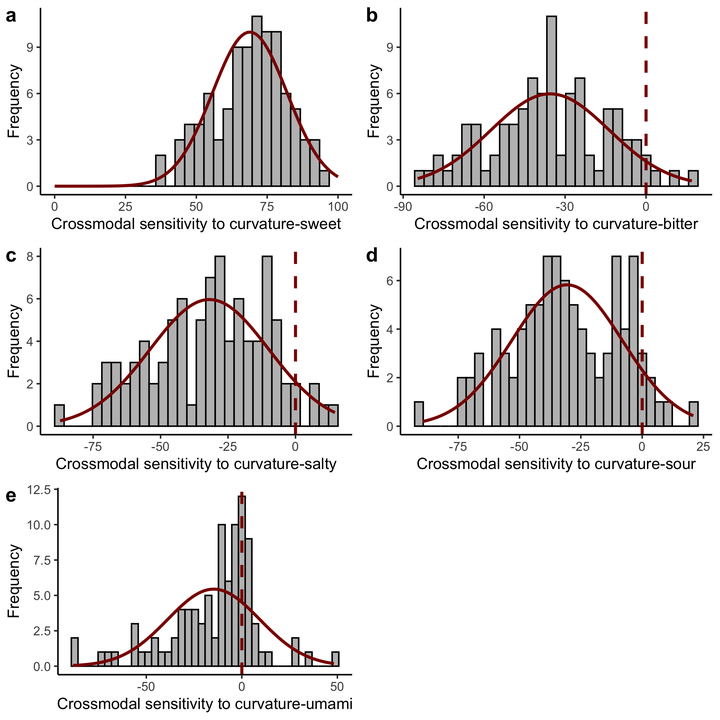Individual differences in sensitivity to taste-shape crossmodal correspondences

Abstract
People generally associate curved and symmetrical shapes with sweetness, while associating angular and asymmetrical shapes with the other basic tastes (e.g., sour, bitter). However, these group-level taste-shape correspondences might conceal important variation at an individual-level. We examined the extent to which individuals vary in the crossmodal correspondence between curvature and symmetry, on the one hand, and the five basic taste qualities (sweet, bitter, salty, sour, and umami), on the other. In Experiment 1, participants matched shapes (curved vs. angular, symmetrical vs. asymmetrical) and taste words. In Experiment 2, participants performed a similar task, though this time using actual tastants. Given that people differ in their hedonic experience of such shapes and tastes, we also measured participants’ liking for each taste and shape. Our results replicate the general crossmodal correspondences between curved-sweet and symmetrical-sweet stimuli. Furthermore, participants tended to match sour and bitter tastes with angular and asymmetrical stimuli. However, the results also reveal that these group-level taste-shape correspondences coexist alongside substantial variation at the level of the individual. While some participants consistently matched specific tastes with curved and symmetrical stimuli, others consistently matched these tastes with angular and asymmetrical stimuli or did not show consistent taste-shape correspondences. Liking for curved and symmetrical stimuli was higher than for angular and asymmetrical stimuli. However, participants also differed considerably in the extent to which these visual features affected their liking. Overall, our findings highlight the substantial individual differences that are associated with the degree to which people associate and value shapes and tastes.